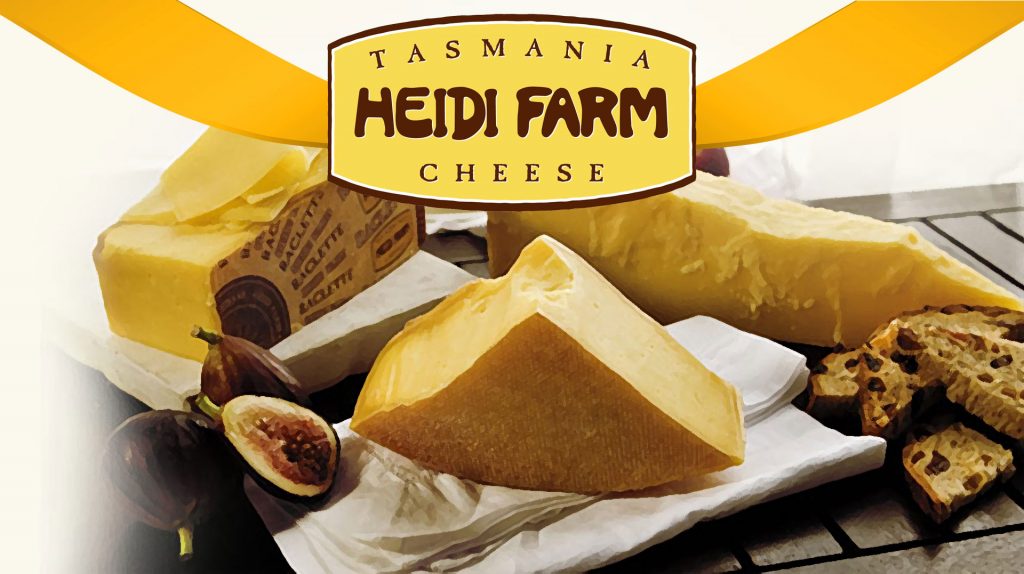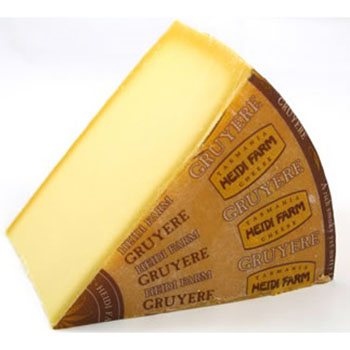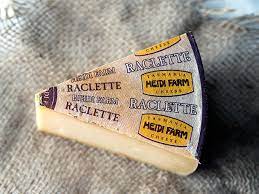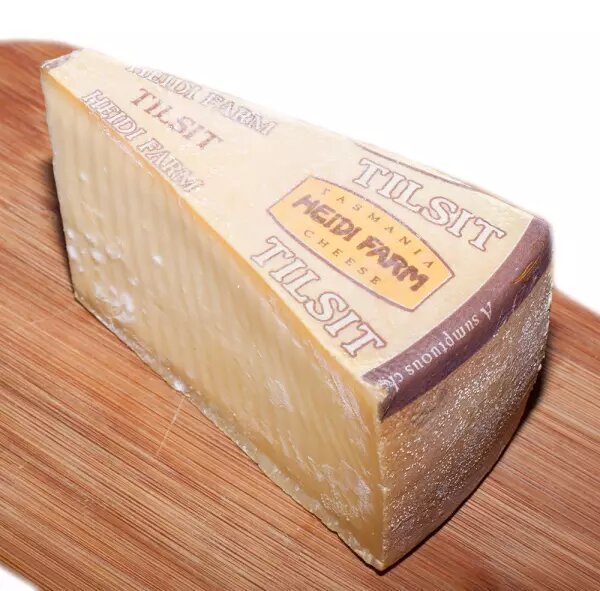The story Of Heidi Farm cheese starts with a man named Frank Marchand Frank came to Australia in 1975 to work for the Lactos Cheese Co. based in Tasmania’s north at Burnie. Lactos wanted to make Swiss style cheese so Frank and his young offsider Ueli Berger pictured above also a recent arrival from Switzerland set about developing a modern Swiss style now known as St Claire.
Frank’s typical Swiss passion for cheese soon kicked in and he left Lactos to make traditional Swiss alpine cheese his way, the right way. Exton in Northern Tasmania saw the birth of a small dairy and farm shop: Heidi Farm. The quality of the cheese and its reputation soon spread and Heidi cheese soon was in great demand on the mainland. Frank retired in 2002 to go fishing. Heidi lives on today although they no longer produce the traditional 35.0 kg wheels ( Australian OH & S put a stop to that ) of Gruyere they now weigh in at about 8.0 kg, but they still adhere to long established traditional methods. Their gruyere, tilsit and raclette are all multi award winning cheeses of the world.
Gruyere
Heidi Farm Gruyere is made in the traditional Swiss way. It has a rich, smoky yet nutty flavour with a hint of creaminess. With age, the rind develops a firmness with a waxy texture.
Raclette
A cow’s milk cheese that has a light-brown rind and a firm texture. It has a round or square shape with smooth, slightly sticky, natural rind. Although the cheese has a pleasant enough flavor, it is enhanced when it is heated in front of a fire or under a hot grill. Then the full nutty, sweet and slightly fruity aroma intensifies and the elasticity of the melting cheese makes it truly magnificent. It is used in a dish called raclette, the name is derived from the French verb racler (to scrape).
Tilsit
Creamy, semi-hard cheese made from cow’s milk. It has a wheel-shape, the thin, dry, yellow-beige crust has some moulds. This cheese was first made by Dutch cheese makers, living in Tilsit which was then in East Prussia. The cheese is washed and brushed regularly for the first two months so that the crusty rind forms. This protects the smooth, supple interior with its tiny, irregular holes from drying out. The aroma is mildly pungent while the taste is buttery and fruity with a spicy tinge. It is generally made with whole milk. A natural hard cheese. It has tiny hole formation and a firm texture, suitable for slicing.



